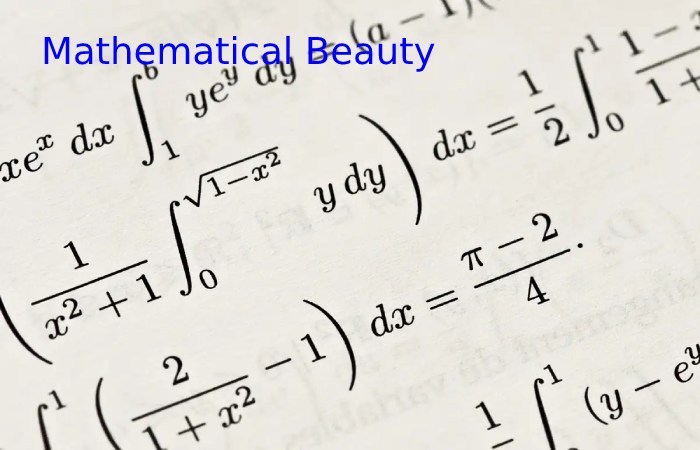Mathematicians have been equating mathematical beauty to musical or plastic beauty. British scientists have now determined that, despite its abstract nature, mathematical beauty is linked to activity in the brain’s same region as beauty is perceived.
The researchers asked 15 mathematicians to look at a batch of 60 equations and rate them one by one on a scale. Next, they examined the volunteers’ brains with functional magnetic resonance imaging while looking at the formulas again. Follow-up explorations revealed that a necessary but not sufficient condition for the subject to appreciate the beauty in a procedure was that they understand its mathematical meaning (some of the presented ones, although well understood, did not strike them as beautiful).
By discriminating between comprehension and beauty, the researchers were able to discount the brain activity associated with awareness and focus on the region responsible for the sensation of beauty: the medial orbitofrontal cortex, a part related to the integration of sensory experience, emotion, and decision making. Previous studies have shown that this brain area appears very active when subjects see or hear something that they perceive as beautiful, for example, plastic or musical art.
Table of Contents
What kind of beauty is in mathematics?

“Beyond practical beauty, color and loud, due to the sparkle of arrivals, the only one that the barbarian knows, science reveals to us a superior beauty.
Many mathematicians claim that they seek beauty as much as a composer or a painter. Points out that this procedure sometimes gives incredible insights because of its depth. “Relegating beauty to the study of art, leaving it outside the walls of science, is no longer sustainable.”
But when we talk about beauty in mathematics, we are not talking about a primary sensation like the one that can come from art, painting, music, or the contemplation of a natural landscape. Although mathematics is quite artful in its construction and development, it has nothing to do with a sect. Still, it is necessary to understand the concepts involved to enjoy mathematical beauty. And when, from initially scatter and unrelate elements. The human mind can create a symphony that harmonizes them and shows them as part of a whole. A luminous landscape offers a deep understanding of the elements and their relationships to each other.
Identifies that the terminology used does not suggest any scientific issue. What are we talking about? Mathematics or esotericism? The most rigorous certainty or dreamlike ravings? We are talking about numbers, a concept as elementary, as primitive, as a number.
Although each person chooses the way of looking at and analyzing the environment that surrounds him. Concept of beauty, there are a series of measures that, since ancient times, lay the foundations of what is beautiful or not. These measurements are known as the golden number or phi number.
The Golden number
She was also known as the golden ratio, golden spiral, or divine proportion as a number with infinite decimal places. Which determines the canon of beauty and the degree of attractiveness of purses.
It results from an equation used by the Greek sculptor Phidias to achieve the most symmetrical features in his worksheet. This rule states that a beautiful face is about one and a half times as lo comprehensive.
What constitutes the beauty of mathematics?
Beauty, like mathematics, is a subjective thing. But if I had to pick a couple of things that make math quite beautiful.
It would be the following two things:
See how entirely different powerful relationships, or even in some cases the same thing called in two different ways
A phrase from an author whose name I don’t remember right now says: Mathematics is bothering other words to the same things.
This point is shared with physics, seeing how very complex, chaotic it can be said that even ugly (be it calculating, visualizing, etc.) conspire mystically to be described and elegantly using logic. This point is lovely, and I will show you an example of my favorites.
The only thing you have to change in all these arrows so that the tip of all of them draw what you want. Where each one begins to rotate and the size of each one. If that does not look beautiful to you, I have no idea what you might think handsome. And there are many other examples, com complex things that simply and beautifully.
ALL possible collections of three things. You invent new ideas, with which you will review old thoughts, which lead to the discovery of new concepts. And will generate more questions, which you can solve using logic or inventing new ideas. With which you will revise old thoughts, and the cycle continues.
Also Read: 6 Ways to Implement Greener Practices in Your Company
